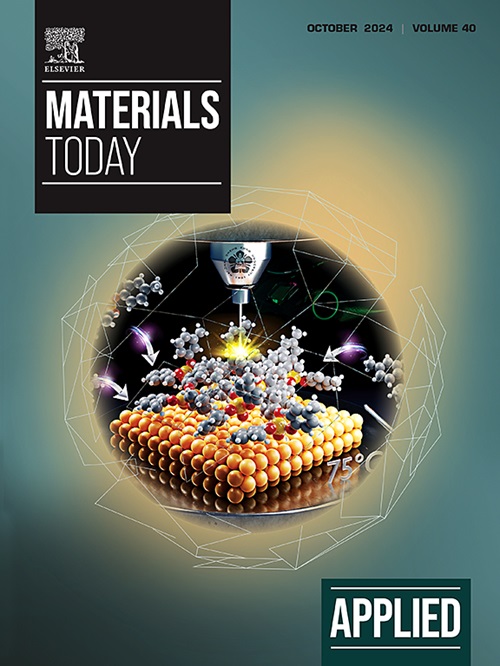Material extrusion-based 3D printed capacitor optimization: Enhancing performance with ZnO and Cu-CNT reinforced ABS composites
IF 6.9
2区 材料科学
Q1 MATERIALS SCIENCE, MULTIDISCIPLINARY
引用次数: 0
Abstract
In recent years, there has been a growing interest in 3D printed electronics due to its potential to revolutionize the electronics industry. 3D printed electronics assists in creation of customized electronic devices that can be tailored to specific needs. Our current work focusses on developing material extrusion (MEX) 3D printed capacitors using Acrylonitrile Butadiene Styrene (ABS) as base polymer. This research aims to investigate the effect of incorporating nanofillers, specifically zinc oxide (ZnO) and copper-carbon nanotubes (Cu-CNT), on the overall properties of polymer composites. The composites were prepared by melt blending ABS with varying concentrations of itaconic acid modified (m-ZnO) and Cu-CNT, followed by 3D printing into capacitor structures. The goal is to enhance the electrical performance of these composites and enable their use in 3D printed capacitors. The studies derived the influence of m-ZnO in enhancing the capacitance and dielectric constant of ABS polymer, while the presence of Cu-CNT augmented the electrical conductivity of ABS by 9 orders of magnitude. These nanofillers also contributed in amplifying tensile strength of ABS polymer along with its thermal properties. Further, the paper describes the design of a 3D printed capacitor that uses ABS/m-ZnO as the dielectric layer and ABS/Cu-CNT as the conducting layer, thereby making it a suitable candidate for developing capacitors with higher capacitance, energy storage devices with improved energy density, and sensors with higher sensitivity.基于材料挤压的 3D 打印电容器优化:利用氧化锌和铜-碳纳米管增强 ABS 复合材料提高性能
近年来,人们对 3D 打印电子产品的兴趣与日俱增,因为它具有彻底改变电子行业的潜力。三维打印电子设备有助于创建可满足特定需求的定制电子设备。我们目前的工作重点是使用丙烯腈-丁二烯-苯乙烯(ABS)作为基础聚合物,开发材料挤压(MEX)3D 打印电容器。本研究旨在探讨加入纳米填料(特别是氧化锌(ZnO)和铜-碳纳米管(Cu-CNT))对聚合物复合材料整体性能的影响。复合材料的制备方法是将 ABS 与不同浓度的衣康酸改性(m-ZnO)和铜-碳纳米管熔融混合,然后通过 3D 打印制成电容器结构。目的是提高这些复合材料的电气性能,并将其用于三维打印电容器中。研究结果表明,m-ZnO 可提高 ABS 聚合物的电容和介电常数,而 Cu-CNT 的存在可将 ABS 的导电性提高 9 个数量级。这些纳米填料还有助于提高 ABS 聚合物的拉伸强度及其热性能。此外,论文还介绍了一种 3D 打印电容器的设计,该电容器使用 ABS/m-ZnO 作为介电层,ABS/Cu-CNT 作为导电层,因此适合用于开发具有更高电容的电容器、具有更高能量密度的储能设备以及具有更高灵敏度的传感器。
本文章由计算机程序翻译,如有差异,请以英文原文为准。
求助全文
约1分钟内获得全文
求助全文
来源期刊

Applied Materials Today
Materials Science-General Materials Science
CiteScore
14.90
自引率
3.60%
发文量
393
审稿时长
26 days
期刊介绍:
Journal Name: Applied Materials Today
Focus:
Multi-disciplinary, rapid-publication journal
Focused on cutting-edge applications of novel materials
Overview:
New materials discoveries have led to exciting fundamental breakthroughs.
Materials research is now moving towards the translation of these scientific properties and principles.
 求助内容:
求助内容: 应助结果提醒方式:
应助结果提醒方式:


